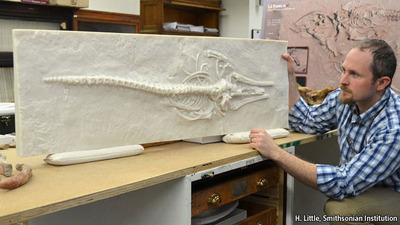It was near the end of a South American expedition for Smithsonian Natural History Museum’s Nicholas D. Pyenson, when he learned fossil whales had been uncovered nearby.
Examining the fossils, which had been uncovered by a road crew constructing a new highway across the Atacama Desert, Pyenson discovered the fossils were of a dozen 7 million year old whales.
As you might imagine, Pyenson, the Smithsonian’s Curator of Fossil Marine Mammals, knew precisely what to do: he called in the SWAT team. In this case, the SWAT team was the Smithsonian’s 3D digitization team, who quickly arrived onsite with laser scanners. They successfully captured a number of excellent whale models.
Now what would you do with whale scans? Print them, of course! The team now expects to 3D print life-sized versions of the fossils for display at the venerable institution. Evidently the printing cost for this operation would normally be around USD$1M, but thanks to industry partnerships the Smithsonian can avoid that expense.
And you’ll be able to see the whales without having to visit the Atacama Desert.
Via The Economist and Central Science (Hat tip to Chris)


